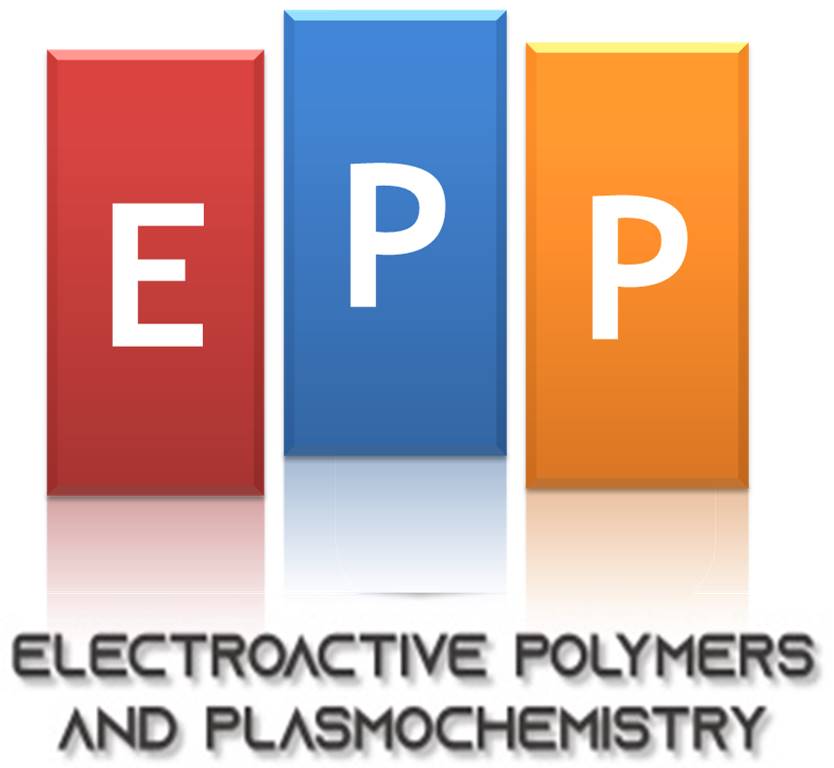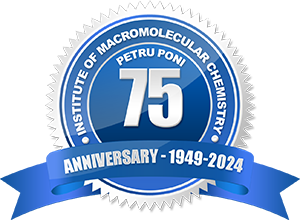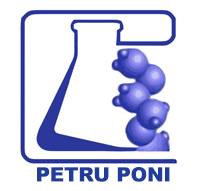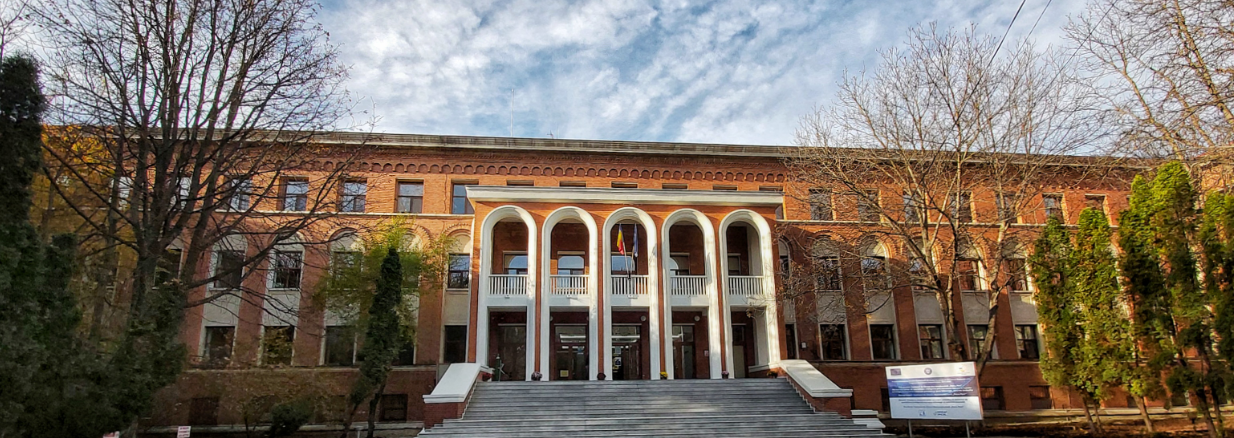|
|
 | Laboratory 7. Electroactive Polymers and Plasmochemistry |
| Head of laboratory: Dr.Mariana-Dana DĂMĂCEANU |
|
|
| Project: Light Emitting Polymeric Devices Improved by Chemical Tools, acronym LEPDICT |
Project: PN-III-P2-2.1-PED-2019-3993, Contract 485PED/2020
Project manager: Dr. Radu-Dan RUSU
Contract Authority: UEFISCDI
Contractor: "Petru Poni" Institute of Macromolecular Chemistry
Period: 2020-2022
LEPDICT addresses the topic of light-emitting diodes (LED), one of Europe’s Key Enabling Technologies of the 21st Century, and combines efforts and knowledge from organic and polymer chemistry, materials science, physics and engineering. LEPDICT is primarily about developing and validating new approaches, generating new, basic and applied, transferable knowledge, and further pushing the boundaries of its contemporary research topics. The main approach is based on the dynamic chemical engineering of materials with a main focus on modulating light-emitting polymeric backbones to balance charge transport through (chromophoric) p-n systems. The foremost chemical concept is the construction of luminescent polymeric systems containing various moieties able to emit light of different colors.
https://rdanradu.wixsite.com/lepdict
https://icmpp.ro/projects/l3/about.php?id=31 |
|
| Project: State-of-the-art engineering of energy saving polymer-based electrochromic devices with low voltage operation, acronym EngEChrom |
Project: PN-III-P2-2.1-PED-2019-3520, Contract 438PED/01.11.2020
Project manager: Dr. Catalin-Paul CONSTANTIN
Contract Authority: UEFISCDI
Contractor: "Petru" Poni Institute of Macromolecular Chemistry
Period: 2020-2022
The main objective of EngEChrom is to develop novel polymeric materials with a double electron donor topology to be employed as active layers in prototype electrochromic devices (EC) with low operating voltages for energy saving. Our previous results and technical skills placed us at TRL2 and allowed us to engineer suitable electrochromic materials still insufficiently explored. The conditions for TRL3 will be fulfilled by the investigation methods and tools, which will predict the electrochromic behaviour. The TRL4 proof of concept will be validated by engineering and optimization of prototype EC devices at lab scale as to achieve long-term stability, rapid switching, high coloration efficiency and low voltage operation (1.1–1.3 V). The fabrication and characterization of the prototype EC devices will fit the standards required by this research topic.
https://icmpp.ro/projects/l3/about.php?id=25
https://constantincatalinp2.wixsite.com/engechrom |
|
| Project: Engineering high-k dielectric materials based on copolyimides for energy-storage devices, acronym High-k-coPI |
Project: PN-III-P1-1.1-TE-2021-1110
Project manager: Dr. Irina BUTNARU
Contract Authority: UEFISCDI
Contractor: "Petru Poni" Institute of Macromolecular Chemistry
Period: 2022-2024
High-k-coPI project aims to deliver solutions towards the reduction of energy consumption by developing new advanced materials engineering with target on film capacitors for energy storage devices. Thus, the project may influence the progress of dielectric materials with high permittivity (k). Polymers are more applicable than inorganic ceramics in higher electric fields, being essential in designing and fabricating the next generation of efficient electronics. The main idea of this project is to find the optimum combination of copolyimide (coPI) properties given by the careful choice of various structural aromatic and aliphatic chain architectures. The originality brought by the present project consists in the use of flexible coPI films with high thermal stability, k and energy storage densities as viable and less costly alternative to the inorganic components. To fulfil the project objectives the work will consist in coPI component design and characterization, physico-chemical investigations with emphasis on morphology, crystallinity, mechanical, thermal and electrical properties as well as energy storage density, and optimization of the coPIs synthesis from the structure-property feedbacks.
https://icmpp.ro/projects/l7/about.php?id=60 |
|
| Project: Developing new conjugated polymeric microporous architectures as solid state sensors for detection of harmful nitroaromatic derivatives, acronym CPM-NAD |
Project: PN-III-P1-1.1-TE-2021-1068
Project manager: Loredana VACAREANU
Contract Authority: UEFISCDI
Contractor: "Petru Poni" Institute of Macromolecular Chemistry
Period: 2022-2024
Conjugated microporous polymers (CMPs) are attractive materials for the detection of chemicals because of their remarkable π-conjugation, large specific surface areas, photoluminescence and electroconductive properties. Despite the advances made in this area, some major drawbacks are still highly amenable to improvement: poor solubility of the chemically synthesized polymers, prediction of porosity from the structural architecture of the tecton-like building blocks and electrochemical detection of the analytes. Electrooxidative polymerization and emulsion polymerization can solve the major problem of processability related to CMPs due to the direct generation of the polymeric architecture (either in form of film or microparticles) as well as other aspects related to the uniformity, porosity and fine adjustments of the structural properties of the formed networks. Moreover, these techniques may conduct to microporous architectures with a high active surface area, avoiding the processability issues being directly formed and easily dispersible in the environment media.
https://icmpp.ro/projects/l7/about.php?id=59 |
|
| Project: Semiconducting Nanocomposites Based on Conjugated Polymers and Multifunctional Janus Nanoparticles as Novel Type of Filler, acronym PolySem |
Project: PN-III-P1-1.1-TE-2021-1332
Project manager: Dr. Mihai ASANDULESA
Contract Authority: UEFISCDI
Contractor: "Petru Poni" Institute of Macromolecular Chemistry
Period: 2022-2024
The research aim of this project is the synthesis, characterization and study of performances of novel nanocomposites containing multifunctional Janus nanoparticles (JNPs) as filler. The scientific merit is the use of amphiphilic snowman-type and semiconducting Janus nanoparticles for development of facile solvent-free synthesis of nanocomposites, homogeneity of the filler distribution in the nanocomposites and enhanced electrical conductivity of the final product with respect to that of the constituting polymer components. The first key target of the current proposal is the synthesis of snowman-type JNPs comprising one semiconducting and hydrophobic lobe and one electrically insulating and hydrophilic lobe. The second key target is related to fabrication of semiconducting nanocomposites, ensuring a homogeneous dispersion of the multifunctional JNPs in the polymer matrix. The third key target is evaluation of nanocomposites performances. As follows, the polymer nanocomposites varying in the JNPs loading will be investigated by means of differential scanning calorimetry and dielectric relaxation spectroscopy. We will attempt to correlate the experimental data in order to shed light on molecular motions, interactions between JNPs and polymer matrix, and on transport processes in semiconducting nanocomposites. What is more, we will evaluate the resistivity of designed polymer nanocomposites in a printed electronic element on a solid support.
https://icmpp.ro/projects/l7/about.php?id=62 |
|
| Project: Energy storage smart windows: from material development to engineering single flexible device with integrated electrochromic and capacitive functions, acronym EnStoreSW |
Project: PN-III-P4-PCE-2021-1728
Project manager: Dr. Mariana-Dana DAMACEANU
Contract Authority: UEFISCDI
Contractor: "Petru Poni" Institute of Macromolecular Chemistry
Period: 2022-2024
The need to explore safe and sustainable energy sources is an imperative concern of the world today. Majority of renewable energy sources depend on the daytime and climate circumstances, therefore one challenge is undeniably the storage of energy. To meet this issue, a cross-disciplinary approach will be applied, from materials synthesis and physico-chemical investigation to engineering low-cost energy devices. More specific, EnStoreSW aims at developing thiophene-based polymers for use as both capacitive and electrochromic materials in flexible energy storage smart windows (ESSWs). At the proposal stage, the chemical structures of monomers and polymers have been designed. During project implementation, experiments will be carried out to synthesize and characterize them. The polymers will be used to develop new electrode materials with electrochromic and capacitive functions, by various wet methods, with focus on flexible electrodes. First, these will be tested in three-electrode cell configuration to screen the material performance, and thereafter validated in device configuration. Exploration and optimization of electrode materials, electrolytes and device structures are the key objectives that meet the ambition of EnStoreSW towards high performance ESSWs.
https://icmpp.ro/projects/l7/about.php?id=57 |
|
| Project: Employing “PEmPTech” in the Synthesis of Ion-Imprinted Polymer Architectures for Metal Ion Extraction from Wastewaters and Hydro Mining, acronym PEmPTech |
Project: PN-III-P4-PCE-2021-0306
Project manager: Dr. Andrei HONCIUC
Contract Authority: UEFISCDI
Contractor: "Petru Poni" Institute of Macromolecular Chemistry
Period: 2022-2024
In this proposal we aim at expanding the application potential of Pickering Emulsion Polymerization Technology (PEmPTech) to produce advanced ion-imprinted polymer (IIP) architectures ranging from colloidosomes, microparticles, monoliths, films for metal ion extraction and recovery from wastewaters and hydro mining. The key elements differentiating PEmPtech from all other ion-imprinting technologies is the use of Pickering emulsions which are stabilized by amphiphilic Janus nanoparticles (JNPs). JNPs with tunable amphiphilic balance can emulsify virtually any liquid monomers, monomer mixtures and ligands to produce ultrastable emulsions suitable for subsequent polymerization. However, pseudoamphiphilic homogeneous nanoparticles can also be used to stabilize Pickering emulsions. Which means that the current project is not restructed to ony JNPs. While the existing synthesis emulsification, precipitation and suspension polymerization technologies to produce IIPs are limited to trial-and-error process of identification of a particular set of monomer and ligand monomers that work in suitable synthetic conditions, we intend to demonstrate at the proof-of-concept level that PEmPTech utilizing amphiphilic JNPs can become a universal platform for facile production of various IIP architectures. The IIPs will be tested in laboratory conditions for metal ion absorption and extraction efficiency and selectivity from simple and complex ion matrices.
https://icmpp.ro/projects/l7/about.php?id=55 |
|
| Project: Exceeding the limits of polyimide membranes for less-energy intensive CO2 separation and capture by employing the PIM concept and blending technique, acronym memPIM-PIs |
Project: PN-III-P2-2.1-PED-2021-1666
Project manager: Dr. Mariana-Dana DAMACEANU
Contract Authority: UEFISCDI
Contractor: "Petru Poni" Institute of Macromolecular Chemistry
Period: 2022-2024
CO2 capture and storage (CCS) was claimed as an essential R&D priority to accomplish the Europe 2050 climate objectives by using cost-effective strategies. The CO2 capture procesess is still too expensive due to low CO2 concentrations in the flue gas, making the amount of energy needed for capture to be process costly. Addressing the CCS Directive of the EU policy, memPIM-PIs aims at developing polymer membranes for sustainable CO2 capture. To this goal, the synergistic effect between the PIM concept applied to polyimides and the facile blending method will be exploited as strategy to engineer novel CO2 capture membranes. Thus, the chain flexibility and segmental mobility will be controlled by incorporating bulky groups and flexible linkages. Blending a fluorinated polyimide with a polyimide containing a bulky group will guide to a library of membranes resistant to ageing and plasticization. Our key strategy relies on the incorporation into polyimides of tertiary amine atoms as receptors for CO2 through 1,3,5-triazine or triphenylamine that will induce adsorbate-adsorbent interactions favorable for CO2 capture. The obtained membranes will be physico-chemically investigated and subjected to gas permeation tests. Their performance will be evaluated by plotting the CO2 permeability and selectivity in Robeson diagrams.
https://icmpp.ro/projects/l7/about.php?id=58 |
|
| Project: Supramolecular Semiconducting Materials for Organic Electronics, acronym SUPRAMOL-MAT |
Project: PN-III-P4-PCE-2021-0906
Project manager: Dr. Aurica FARCAS
Contract Authority: UEFISCDI
Contractor: "Petru Poni" Institute of Macromolecular Chemistry
Period: 2022-2024
The interest in the area of semiconducting polymers (SMPs) for organic electronics has intensified during the past few decades as a consequence of their numerous advantages over conventional inorganic materials. Being in direct competition with inorganic thin-film and crystalline silicon photovoltaic (PV), there are still many points for improving SMPs`s charge carrier mobility that is the main difference between these organic and inorganic materials. This is why there is a lot of research interest for improving the electronic properties of SMPs. Recently, so-called supramolecular SMPs have been recognized as promising materials that attracted much attention for optoelectronics. These supramolecular compounds exhibit a crucial importance for further development of organic electronics and represent a key bottom-up strategy to build and process relatively soft functional materials. The design and synthesis of such supramolecular SMPs of polypseudorotaxanes (PPs) or polyrotaxanes (PRs) types open the gates to unprecedented opportunities in many fields of science and technology. On the basis of our previously studies, it was found that the supramolecular encapsulation of SMPs backbones is effective in preventing aggregation and hindering fluorescence quenching, even when only a small fraction of the conjugated backbone is encapsulated. Therefore, our proposal is aiming to investigate a series of new and original supramolecular SMPs and to select the most promising materials directly for construction of innovative devices or new classes of biomimetic ionic channels that will be safe for human and environment. These newly proposed supramolecular architectures will be contributing forces and no doubt will lead to interesting results. In addition, the accomplishment of the scientific objectives themselves will give the team members an excellent training in a multidisciplinary field at the intersection of organic synthesis, supramolecular and polymer chemistry as well material science for the generation of active layer for organic electronic devices.
https://icmpp.ro/projects/l7/about.php?id=50 |
|
| Project: COMPAS – Cointegration of Microelectronics and Photonics for Air and Water Sensing |
Project: HORIZON-CL4-2023-DIGITAL-EMERGING-01-51 (RIA)
Contract nr. 101135796
Coordinator: SINTEF Norway
ICMPP main contract: Dr. Mariana-Dana DAMACEANU
Period: 2024-2027
COMPAS has as main objective to develop a compact, inexpensive and ultrasensitive PIC sensing platform (PSP) for air and water monitoring, relying on the co-integration of light source, detectors and electronic IC for on-chip signal processing.
The PIC sensor principle will be based on interference between two guided light modes, one of which interacts with analytes and the other being a reference. The resulting intensity changes offers excellent sensitivity to changes in concentration of analytes in air or solution. Multiple light paths can be placed on the same device offering multi-analyte sensing in an ultracompact device. COMPAS builds a first-of-a-kind fully integrated system around this principle (including light source, detectors and signal processing). The COMPAS PSP begins at TRL2 and will end with TRL5 validation in relevant environment by end-users towards air and water monitoring.
https://icmpp.ro/compas/
https://eucompas.net |
|
|








